Recycled plastic products offer an ethical alternative to the use of traditional materials. Recycling of plastic is becoming more and more important as more people are becoming aware of the environmental problems surrounding plastic waste.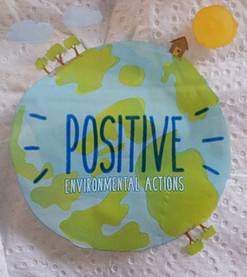
The spread of this environmental sensibility has also led fashion to question itself on how to do its part. More and more clothing brands are beginning to propose collections using environmentally sustainable fabrics.
Plastic is one of the biggest contributors to materials that damage the environment. Each year about 8 million tons of plastic end up in our oceans. From packaging to plastic bags, bottles, food containers and other single use plastic products, the waste builds up very quickly, causing even more damage to our planet.
In this article we will be looking at why recycling of plastic is important and also what is recycled plastic used for.
Why is Plastic not Good?
- Unsustainable resources like natural gas and petroleum are used in the production of plastic.
- Many harmful chemicals like BPAs and phthalates are present in plastic which can present a health risk to consumers.
- Plastic poses a serious threat to marine life because of the huge amount of plastic being dumped into the ocean every year.
- At the moment only about seven percent of plastic is recycled, causing more problems when it ends up in landfill sites.
- Plastic doesn’t biodegrade and leeches chemicals into the soil.
- Toxic fumes are released when plastic is incinerated.
What can I do to reduce or stop the amount of plastic that I use?
Reducing the amount of plastic that we use in the first instance, is the best thing we can do for the environment. More and more reusable alternatives to single use plastic are now available.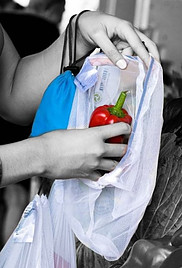
- Reusable food or produce bags. When choosing your loose fruit and vegetables, a reusable produce bag can easily replace the single use plastic bag that is normally on offer in the supermarket. These bags are small and light and produce will not “sweat” in them, the way it does in plastic bags. You can also wash your fresh produce while it is in the bag.
- Reusable shopping bags: not only will you save yourself some pennies or cents by using reusable shopping bags, you will also be helping the environment.
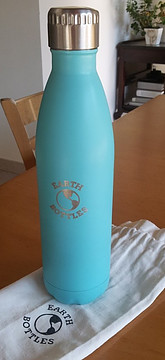
- Select produce that is not wrapped or packaged in plastic. Rather select your own fresh produce and use your reusable produce bags. Don’t buy pre selected and produce wrapped in plastic. Why buy a bunch of bananas that have been wrapped in plastic?
- Use reusable water bottles- There is a very big range of reusable water bottles in varying sizes that can be used, rather than a plastic water bottle. If a plastic water bottle is left in the sun, harmful chemicals can leak from the plastic into the water. There is a possible link between water from plastic water bottles and breast cancer. So rather invest in a durable reusable water bottle.
- Don’t use disposable razors that are made from plastic. Instead use a plastic-free, eco friendly razor that is made with the mission to save our oceans.
- Say no to single use plastic products like straws and earbuds.
- Don’t use disposable plastic plates and cutlery. Alternatives like paper and bamboo, which are bio-degradable, are available for the occasions that single use products are unavoidable. Read more about plastic alternatives in this post on What is Wheat Straw Plastic? And also What is Corn Starch Plastic.
- Take away cups for coffee are normally made from paper with a plastic lining, which makes it almost impossible to recycle, let alone bio-degrade. Invest in a reusable “keep cup” to use for your coffee and save yourself a few cents or pence every time you buy a coffee.
Reduce, Reuse, Recycle
This is the order in which we should be looking at using plastic. First we reduce the amount that we buy. Then reuse as much as possible, before we recycle or downcycle and upcycle.
Recycling is when material from a product is reclaimed to produce another product of the same or equal quality. This can be done with PET (Polyethylene Terephthalate) bottles, aluminium and glass.
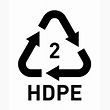
Downcycling is when we reclaim materials and produce products of a lower quality than the original. HDPE (High Density Polyethylene) plastic can be added to other resins or recycled materials to create new products. Paper recycling also falls into this category.
Upcycling on the other hand converts waste materials or products into a higher quality product or one with a better environmental value.
Recycling of Plastic
The next thing is to recycle properly. One ton of recycled plastic saves more than sixteen barrels of oil. Recycling plastic needs about sixty percent less energy than producing virgin plastic. Recycled plastic is not perfect as it still requires large 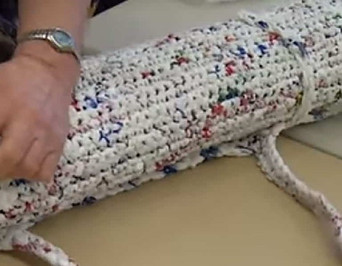 amounts of water and energy and often chemical processing as well. But, at least some plastic that we already have, can be reused.
amounts of water and energy and often chemical processing as well. But, at least some plastic that we already have, can be reused.
It is not just rigid or hard plastic like Tupperware that can be recycled, but also soft or flexible plastic like shopping bags. Shopping bags can be cut into strips and tied together to form a continuous yarn. This plastic yarn is then used to crochet or knit mats.
But there are many more plastic items that can be collected for recycling. These would include food wrappers, bubble wrap, bags from rice, pasta and bread, plastic film from toilet paper and nappies, citrus bags, cereal liners and many more.
Used plastic bags can be melted down to make new plastic bags. This process is not only more efficient than making bags from scratch, but is also better for the environment.
Innovative Recycled Plastic Products
Lenzing, an Austrian company, has developed a closed loop production cycle in which Refibra technology is used. 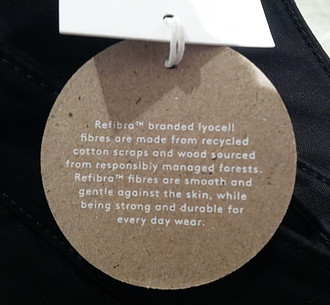
Refibra technology involves the upcycling of cotton scraps from garment production, which is added to wood pulp, which has been sourced from responsibly managed forests.
This results in a new raw material, TENCEL TM branded Lyocell fibers, that are produced to make fabrics and textiles. During manufacturing 99.7% of solvents are recaptured and reused. Also, 95% less water is used in the production cycle than in conventional cotton fabric production.
The fibers are smooth and gentle against the skin, while being strong and durable enough for everyday wear. The fibers are being used in fabric for jeans and other outer garments and Patagonia is one clothing brand that is already using this fabric.
ECONYL® is 100% Nylon yarn which is regenerated from pre and post consumer waste materials. Materials such as abandoned fishing nets in the seas, recycled plastic bottles, tulle or fluff of carpets and other plastic products, are used. It is produced by two Italian companies, Carvico and Jersey Lomellina and over 700 fashion and clothing brands are using the fabric worldwide to produce exclusive beachwear.
These fabrics are comfortable, elastic, innovative and resist pilling. The fashionable swimsuits are high performance and are resistant to oils and sun creams and UV rays and most importantly, have an eco friendly soul .
There is a program in Australia called Redcycle where soft and flexible plastics, like plastic bags and cereal liners, are collected for recycling. After some initial processing, the plastic is delivered to Replas, an Australian manufacturer. They blend this mixed plastic with rigid plastic to make a material that is suitable for the manufacturing of new recycled plastic products like outdoor furniture, decking and fencing.
Recycled plastic composite timber is the result of upcycling or downcycling products.
What is recycled plastic used for?
The type of plastic resin that is obtained from the recycling process will determine the type of plastic product that can be made. There is a very big range of recycled plastic products that is now available including the following:
- Garden products like outdoor furniture, fencing, decking and plant pots.

- Bottles for household cleaners, detergent and shampoo are mostly made from recycled plastic that is known as high-density polyethylene.
- Film and multipurpose sheeting
- Traffic cones and bollards (instead of timber)
- Packaging materials
- Rubbish bags
- Countertops
- Kitchenware
- Carpeting
- Textiles for clothes and shoes.
- Backpack, duffel bags and travelling accessories. The duffel backpack by Monarch is being made with 50 recycled plastic bottles and is a certified plastic negative product.
- Fitness trails for parks and beaches
- Animal – dog agility, kennels
With technology continously advancing, the list of what recycled plastic can be used for is changing regularly.
Benefits of Recycling
- The biggest benefit of recycled plastic products is that they are environmentally friendly. If less plastic is produced, then there will be less greenhouse gas emissions.
- The amount of plastic going into landfill and contaminating our oceans are significantly reduced.
- Recycled plastic products are long-lasting and low in maintenance while offering an ethical alternative to using traditional materials.
- It is resistant to termites, microorganisms and moisture and will not rot, split, crack or need painting.
- Recycled plastic can be used for quality cost effective products that are easy to install.
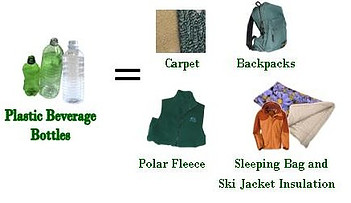
With the use of plastic that is on the increase, it means that we all need to reduce, re-use and recycle plastic. By buying products that are made from recycled plastic, it ensures that more plastic is recycled. Recycled plastic is used for viable products that will make the environment better. So if you do need to buy storage containers like Tupperware, then look out for the range made from recycled plastic.
If we all work together then small gestures can really make the difference in the face of one of the most worrying problems of our time: the pollution of our planet.
I look forward to hearing your comments and ideas on recycling of plastic.

The best part of your blog for me is when you said that there will be less green gas emissions if plastic products and recycled. This must be something that I will take note of in order to help protect the environment starting this week. Maybe, I can start sorting out the boxes of waste in our basement to bring the plastic materials to a recycling center next Friday.
There is actually nowhere in the blog that it is said that there will be less green gas emissions produced if plastic is recycled. What is mentioned is that less fossil fuels will be used and less energy is required to recycle plastic, than producing virgin plastic
I thought it was interesting that you said textiles for clothes and shoes can be made out of recycled plastic products. I never really thought about how plastic could be reused in this way and is making me rethink what things I recycle. It makes me want to do my part and look into what I can find that is made out of recycled materials so that I can leave a much smaller footprint on the world.
Recycled plastic has some very innovative uses and applications, with clothes and footwear just being two of them. You might find this post on 8 Best sneakers made from recycled plastic helpful as well. All the best, Liné
I like your article. And I reduced plastic in my everyday life. I think we are slowly moving forward to reducing it completely. I hope that the humankind is waking up. I wish that recycling is part of the educational system everywhere and that from an early age we teach our kids how much is important to take care of the environment, separate the garbage, recycle.
Articles like yours serve the planet Earth. Thanks.
I think it is an important step in the right direction to teach kids from a young age that we need to look after our environment, and that includes getting rid of waste in a responsible way and very important to recycle and reuse. So if kids can learn that at school, it will hopefully help to change the mindset about recycling and specially the amount of plastic that is being used.
Hi, this is such an excellent article you have written up here concerning recycling of of plastic used. I try all my possible best to prevent myself from making use of a plastic but once in a while, it is inevitable and ever since I have gotten to know about the hazards associated with all these plastics, I have been using and reusing the ones I had to buy as a result of inevitability. Thanks so much for this post. I will bookmark and send it out to my social media platforms.
With more people becoming aware of the possibility of recycling of plastic waste, more recycled plastic products will hopefully become available.
Hi Lin,
Thanks for your wonderful,informative article. I have totally agree with You. We always should keep concern about recycling materials mainly plastic.Day by day the environment of this World going worse but we people don’t care about it.If we start use some other environment friendly material like paper,clothes instead of plastic we could save our world. With this we all should concern about recycling as well.Will we properly recycling those plastic materials which are dangerous for our environment?-At least once a day we should ask ourselves.
Hi Nazmun, the possibilities of what is recycled plastic used for, are continuing to grow with more research being done and more awareness of the importance of recycling of plastic.
A very interesting and informative post Lin, though I do of course agree that it is important to recycle and reuse plastic items to reduce pollution, but I remember a time when most containers especially bottles were made of glass, there was a deposit paid on the bottle when it was purchased so when the contents of the bottle were finished the bottle was taken back so as to get the deposit back, I have no idea why they changed this idea, it worked perfectly at reducing pollution and didn’t use up natural resources because the same bottle was simply used again.
Russ
Hi Russ, I also remember the deposit on glass bottles that encouraged everybody to return and recycle them. Maybe if there was a “reward” for returning plastic, then more recycling of plastic waste will take place.
Wow, I have been further enlightened about my eco system. I used to hear and learn about my environment and how I can better sustain it through the minimal use of plastics. Today, I have learnt about the 3Rs Reuse, recycle and reduce. Its great to know that recycled plastics are used for the betterment of man. I think i shouo
When we consciously think about recycling of plastic, then to reduce, reuse and recycle the amount of plastic we use become a habit.
I like using alternatives to plastic if I can help it. Or, if I can’t avoid plastic, I’ll simply reuse the plastic products I already have (like one-gallon jugs that I carry around and drink) until it ruptures; ditto for plastic bottles, but working often in libraries, there’s often a handy recycle bin, which is nice. I often urge others to reuse their plastic products and plastic is often easy to reuse, which reusing alone would reduce harmful waste products. It’s true that oil and petroleum is used in the production of plastic, but what’s scary is that oil and petroleum is used in tons of other product as well…okay, really scary.
Good to hear that you are reusing and recycling plastic. It is surprising how many people do not know what is recycled plastic used for and also do not think of recycling of plastic that they use.